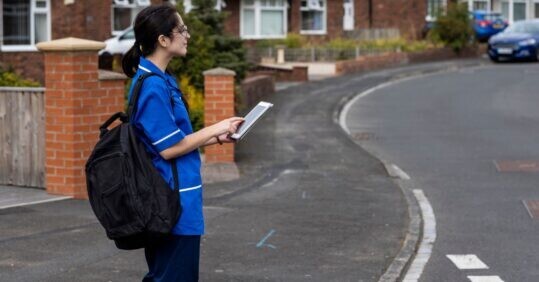RCN Congress votes to lobby DHSC to reverse public health nurse cuts

Delegates at the Royal College of Nursing (RCN) congress in Belfast have passed a motion for to lobby on the Government to reverse its cuts to health visiting and school nursing services.
According to the RCN’s report The Best Start: The Future of Children’s Health – One Year on, released today, the majority of health visitors and school nurses report understaffing following budget cuts.
In England, health visitor numbers have fallen by more than 2,000 in the past two years and there is currently one school nurse for every 3,700 pupils.
Chair of the New NHS Alliance, Heather Henry told the delegates: ‘I think that the Department of Health is out of touch with what’s happening on the ground.
Related Article: QICN bids farewell to Dr Crystal Oldman as she retires from CEO role
‘Vote to give the Department of Health a bloody nose on this one.’
Ellen Nicholson, interim course director of the general practice nursing programme at London South Bank University, said: ‘When we no longer have access to health visitors and school nurses, the work won’t disappear.
‘The work is going to be absorbed into general practice and as we know general practice nurses and GPs are already overstretched.’
The congress passed the motion by a hand vote.
In a survey of its members, the RCN found that health visitors are the most likely group to have experienced understaffing. Three quarters of health visitors (73%) said there was a shortage of at least one registered nurse on their last shift – compared to 55% of overall nursing staff.
It was also found that 85% of health visitors and 64% of school nurses were not able to take the breaks they were entitled to during their last shift, compared to 59% of nurses overall.
The report revealed that the health visiting workforce fell from 10,309 to 8,275 between October 2015 and January 2018.
Related Article: England’s domestic supply of learning disability nurses projected to end by 2028
The number of full-time school nurses fell by 23% to just 2,332 between March 2010 and January 2018 – despite a rise of over 45,000 in the number of school pupils during the same period.
Health visitors and school nurses are vital to the prevention programme, covering children’s health from pre-conception to adulthood. They are especially crucial in deprived areas and in providing safeguarding.
Local authorities currently access funding for public health services through a Public Health England Grant. From 2020 funding will move to local authority business rate retention, risking further reductions in public health spending in economically deprived areas and where children need it most.
Deputy president of the RCN, Professor Rod Thomson called the plan to switch to business rate retention ‘stupid at best and criminal at worst’ as most local authorities will not be able to raise adequate funds this way.
Janet Davies, chief executive and general secretary of the RCN, said: ‘A year since we lifted the lid on the decline in these services, children and young people are still not getting the care they urgently need. It has been a year of drift.
Related Article: Not enough specialist nurses to provide palliative care in rural communities
‘Children’s health services are the frontline defence against childhood obesity and poor child mental health, but nurses report they are understaffed, unable to take breaks and feel the care they give is compromised.
‘This downward trend cannot continue. The Government risks turning back the clock on children’s health if it does not invest in the school nursing and health visitor workforce.’

See how our symptom tool can help you make better sense of patient presentations
Click here to search a symptom




